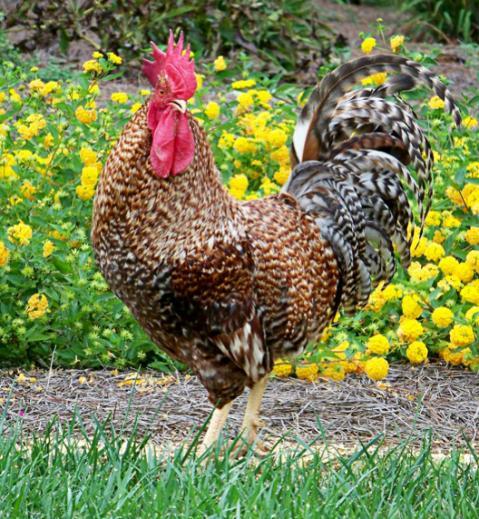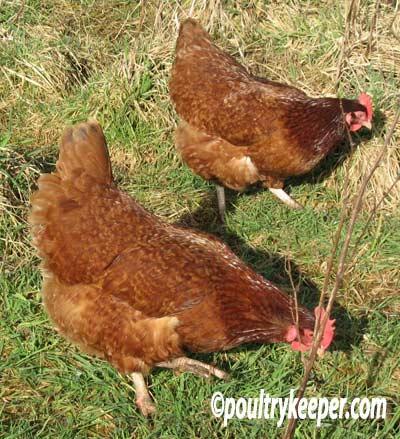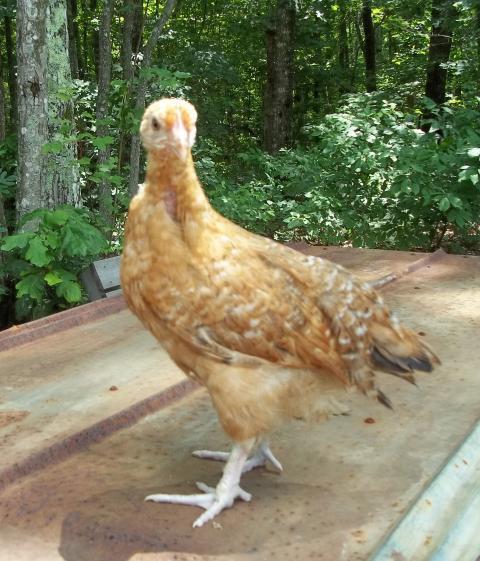I'll be breeding Rhodebars in 2012, eggs in the incubator now!!!
Some info about them from the Greenfire farms website....
Rhodebars are the uniquely wonderful offspring of a shotgun marriage between the Yanks and the Brits. In 1947, British geneticists crossed Rhode Island reds (the quintessential America barnyard chicken) with golden brussbars (a rare British breed) to create an auto-sexing chicken breed with striking red barring and the ability to annually lay hundreds of extra large eggs. (To learn more about auto-sexing chickens please read about Greenfire Farms cream legbars on this website.) Rhodebars enjoyed brief favor in Britains commercial poultry flocks until they were bypassed by more modern hybrids.
Despite their unusual good looks and solid record of production, today rhodebars are virtually extinct. It is estimated that fewer than a hundred hens remain in Britain, and until now none were known to exist outside that country. The threat to this breed potentially creates the loss of a wonderful genetic treasure since a hen from a good strain of rhodebars will produce over two hundred very large tinted eggs a year. And, rhodebars are perhaps more effective at auto-sexing than any chicken breed in the world: Yellow chicks are males and chicks with chipmunk stripes on their backs are females. The visual distinction between the two sexes is striking.
Greenfire Farms was able to import some of the last remaining rhodebars, and we introduced into the breeding flock both production and traditional strains of American Rhode Island reds. These American birds injected some much-needed genetic diversity into the rhodebar line and produced birds that are extremely prolific egg layers. By back-breeding these crosses to pure rhodebars we were eventually able to produce a rhodebar bloodline with all the characteristics of pure rhodebars (including auto-sexing) and the productivity of a modern commercial chicken. Arguably, this makes our rhodebars the ultimate fowl for homesteaders and small-scale producers: a bird that is prolific as it is beautiful with the enormous added benefit of being auto-sexing. These traits are sure to quickly endear the rhodebar to Americas poultry enthusiasts.
Males weigh in at around 8 lbs while females are 6 lbs.
Here is a picture of the parent roo and a pic of the what the hens look like


Some info about them from the Greenfire farms website....
Rhodebars are the uniquely wonderful offspring of a shotgun marriage between the Yanks and the Brits. In 1947, British geneticists crossed Rhode Island reds (the quintessential America barnyard chicken) with golden brussbars (a rare British breed) to create an auto-sexing chicken breed with striking red barring and the ability to annually lay hundreds of extra large eggs. (To learn more about auto-sexing chickens please read about Greenfire Farms cream legbars on this website.) Rhodebars enjoyed brief favor in Britains commercial poultry flocks until they were bypassed by more modern hybrids.
Despite their unusual good looks and solid record of production, today rhodebars are virtually extinct. It is estimated that fewer than a hundred hens remain in Britain, and until now none were known to exist outside that country. The threat to this breed potentially creates the loss of a wonderful genetic treasure since a hen from a good strain of rhodebars will produce over two hundred very large tinted eggs a year. And, rhodebars are perhaps more effective at auto-sexing than any chicken breed in the world: Yellow chicks are males and chicks with chipmunk stripes on their backs are females. The visual distinction between the two sexes is striking.
Greenfire Farms was able to import some of the last remaining rhodebars, and we introduced into the breeding flock both production and traditional strains of American Rhode Island reds. These American birds injected some much-needed genetic diversity into the rhodebar line and produced birds that are extremely prolific egg layers. By back-breeding these crosses to pure rhodebars we were eventually able to produce a rhodebar bloodline with all the characteristics of pure rhodebars (including auto-sexing) and the productivity of a modern commercial chicken. Arguably, this makes our rhodebars the ultimate fowl for homesteaders and small-scale producers: a bird that is prolific as it is beautiful with the enormous added benefit of being auto-sexing. These traits are sure to quickly endear the rhodebar to Americas poultry enthusiasts.
Males weigh in at around 8 lbs while females are 6 lbs.
Here is a picture of the parent roo and a pic of the what the hens look like


Last edited:






